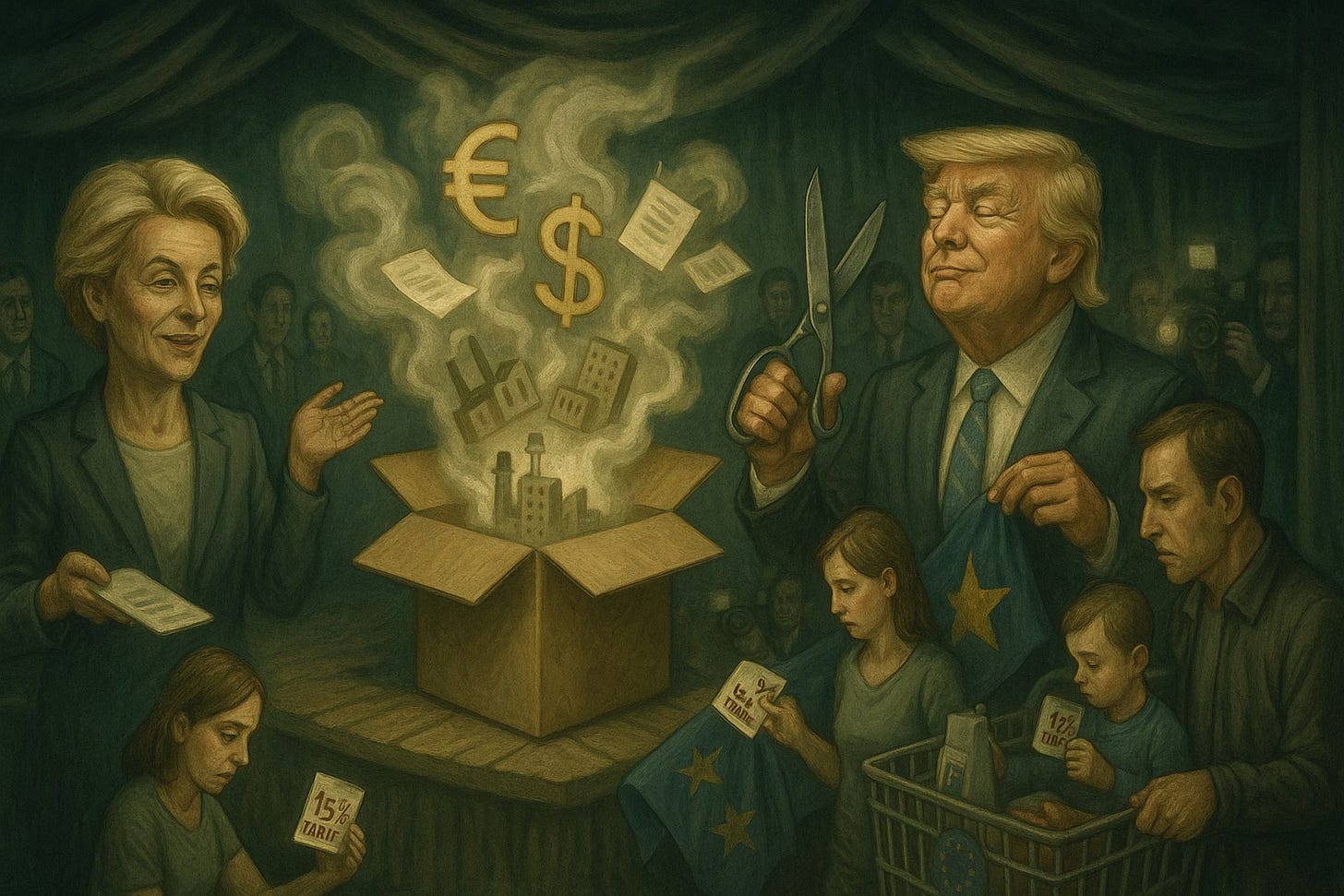Schrodinger's Investment Deal
It's both $600 billion and $0 until you open the box.
Well, this is rich. The European Union just admitted it can’t actually deliver on its $600 billion investment promise to Trump. The confession came Monday morning, roughly 24 hours after the handshakes and photo ops in Scotland.
Turns out the entire sum depends on private companies doing whatever the hell they want with their money. Brussels promised Washington $600 billion of other people’s money. Money they don’t control. Money that exists primarily in the realm of investment intentions.
Here’s what actually happened: Trump threatened 30% tariffs. Von der Leyen showed up. They negotiated. Trump reduced his threat to 15%. In exchange, the EU offered fantasy investments plus $750 billion in energy purchases.
“It is not something that the EU, as a public authority, can guarantee.”
— Senior European Commission official
No kidding.
This is like me promising you that my neighbors will buy your house. Sure, I talked to them at a barbecue. They mentioned maybe looking for property. I did some napkin math. Deal secured! Pay no attention to the fact that I can’t make them do anything.
Of course, we’ve seen this movie before. Apple keeps promising billions in U.S. manufacturing investments. The factories? Perpetually coming soon. China promised $200 billion in additional purchases during Trump’s first term. Nothing happened. Qatar’s recent investment announcement probably amounts to some real estate and a private jet.
The media breathlessly reports each new fantasy figure without ever checking if the last dozen materialized. And while everyone’s focused on these imaginary investments, something very real is happening: American consumers are about to pay 15% more for European goods.
EU car exports to the U.S. hit 38.5 billion euros last year. Slap 15% on that. The tariff might be aimed at Brussels, but the bill lands in American driveways. Pre-Trump, we had functional tariff rates. Now we’re at 15% on most goods, 50% on metals. Steel, aluminum, copper. The stuff you need to actually build things.
So why did the EU play along with this charade? They knew it was nonsense. They admitted it immediately.
Simple math: 15% tariffs beat 30% tariffs. Von der Leyen showed up, offered a promise she knew was meaningless, and got a 50% reduction in Trump’s threat.
The $600 billion figure came from asking business associations about investment intentions. Everyone knows most won’t show up by February, but the announcement sounds good in December.
Why would European companies suddenly flood the U.S. with investment? The American market is being run by a guy who makes policy via social media. Companies invest where they see predictable returns, not where politicians shake hands and make promises nobody can keep.
No tariffs, no threats, no theatrical negotiations, and the economy would be humming along just fine.
With lower prices.
But doing nothing doesn’t generate headlines.
What we’re left with is painfully clear. Americans pay 15% more for European goods. Europeans might invest $600 billion (they won’t). Trump gets his headline. Von der Leyen avoids worse damage. Consumers get screwed. The existing $2.8 trillion in EU investment in America, the 3.4 million jobs it supports? That’s real, boring, productive capital that nobody talks about because it doesn’t fit the narrative.
Real businesses, meanwhile, make real decisions based on real factors. A German manufacturer isn’t checking Twitter for investment guidance. They’re looking at costs, evaluating risks, trying to navigate a world where trade policy gets made by tantrum. The productive economy muddles through despite the circus, not because of it.
Welcome to the $600 billion fantasy.
Your admission fee is 15% of everything European you buy.
At least the photo ops looked nice.


